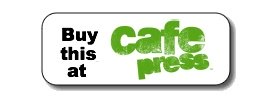Board Game Party T-shirt
by Tom Warin
(Salem, MA)
The board game party was an idea first suggested in a 1925 issue of Ladies’ Home Journal, which suggested it as a more appropriate venue for young men and women to mingle than a jazz club, or “Charleston Hop”.
During the Great Depression, board game parties became popular throughout the country as inexpensive entertainment, although many people were so poor that they had to carve their own board games out of scrap lumber. These crude games were known as “Hoover Chess”.
Board games were seen as key to maintaining morale on the home front during World War II, with President Roosevelt going so far as to appoint a Secretary of Gaming. This man encouraged young scientists such as Richard Feynman to work on board games. Quantum Electrodynamic Scrabble was never popular, though.
The popularity of board game parties took a hit in the 1950s when Joseph McCarthy, stinging from a particularly humiliating game of Scrabble, denounced them in Congress as being havens for Communism. They soon rebounded in the 1960s, particularly after John Lennon famously claimed that the Beatles were “bigger than Go”.
We should skip over the lusty Twister game parties of the 1970s, the coke-fueled Monopoly game craze of the 1980s and the “Grunge Games” of the 1990s.
In the go-go 2000’s, a board game party is just plain old fun for all involved. It is true that there have been isolated examples of monsterism resulting from excessive board gaming (as demonstrated in this public information Board Game Party T-shirt available from CafePress), but the risk is vastly overstated.

 Board Game Party T-shirt
Board Game Party T-shirt